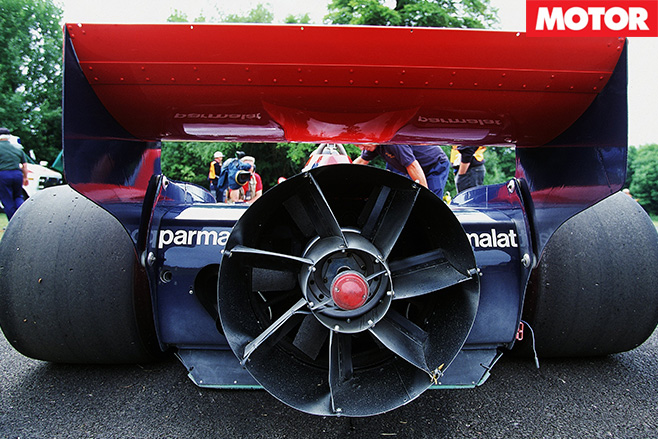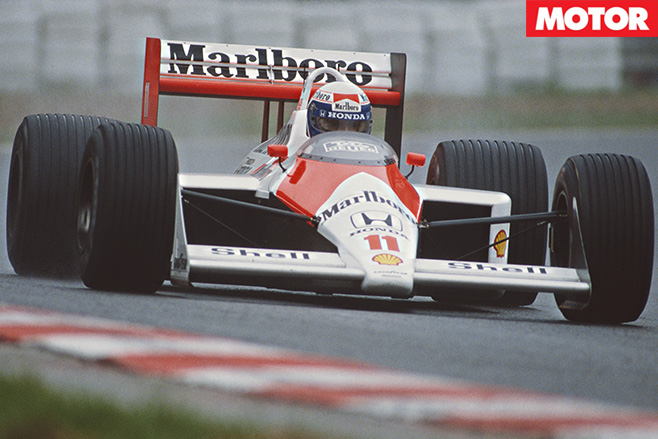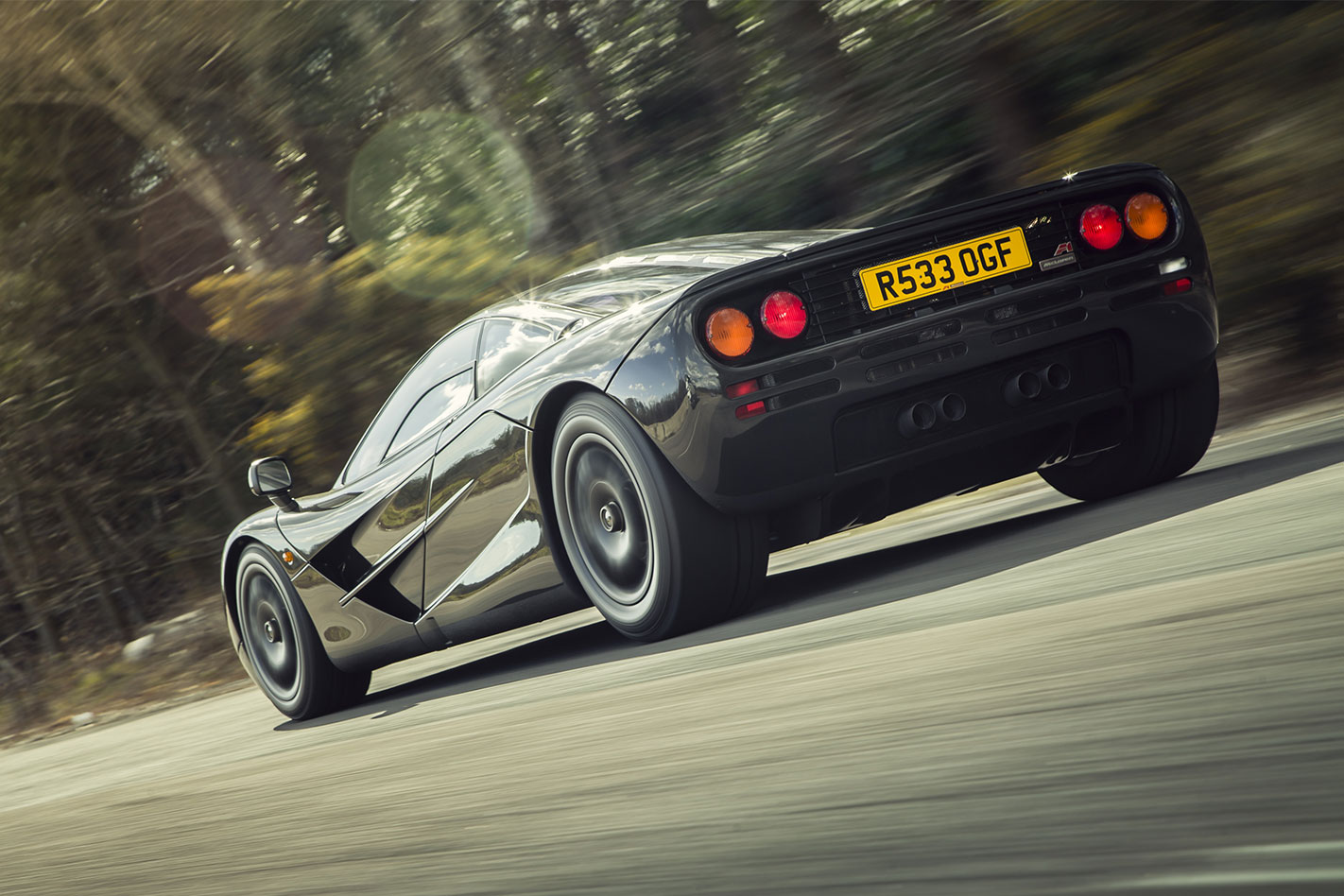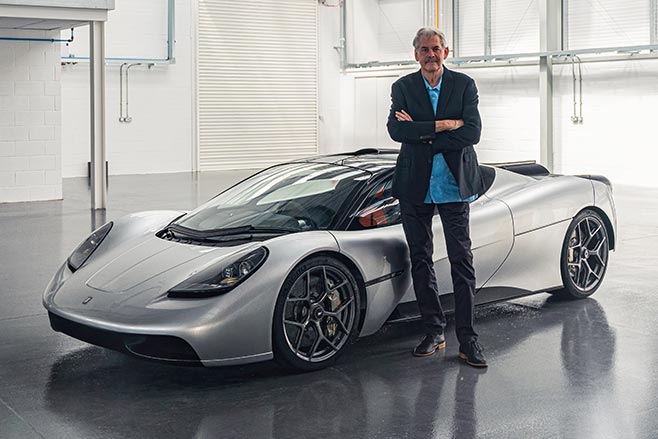“I would have left it with the F1. But now there’s a point to be proven,” Gordon Murray said in a Goodwood interview in 2014, well before the Gordon Murray Automotive (GMA) T.50 was public knowledge.
Now, Murray’s point, that “you can still do a great driver’s car with an internal combustion engine and pure engineering,” is about to be proven, or so we expect from the man who created the car often considered to be the greatest supercar of all time.
But the McLaren F1 isn’t the only thing on Gordon Murray’s resume, even if it may be the biggest highlight.

The South African-born (1946, 74 years old) Ian Gordon Murray is a British citizen, having lived in England for most of his life and now resides in Surrey, not far from his current Gordon Murray Design and GMA workplace.
But even before his move to the UK to work as chief designer for the Brabham Formula 1 team, Murray had studied mechanical engineering in Durban and gone on to build a race car, his IGM Ford.
The car was a 1-litre Anglia engine-powered bespoke car, though it used some body parts from a Lotus 7, meaning it looks somewhat like a Caterham kit car. Murray even raced it himself in South Africa’s National Class in 1967 and 68.
Did you know the McLaren F1 also had small aero fans?
The next year, 1969, Murray was at Brabham, where he would go on to create (under Bernie Ecclestone’s management from 1973) a legacy carries through to the T.50: his use of fans.
The Brabham BT46B was reportedly described by then Brabham driver Niki Lauda as uncomfortable to drive due to its incredibly high cornering speeds, achieved by a large rear-mounted fan drawing out air from underneath the car.

Lauda would go on to race only once with the ‘fan car’ winning the 1978 Swedish Grand Prix upon its debut before the car was banned. This win is just one of 50 Grands Prix that ended with a Murray-designed car crossing the finish line first.
A couple of years after the fan car, Murray’s time at Brabham resulted in two F1 drivers’ championships for the team in 1981 and 1983 with the BT49 and BT52 respectively, both with Nelson Piquet taking out the title.
The team’s fall from dominance coincided with its move away from Ford engines, with Murray’s yet-to-be-realised future further proof that his designs weren’t the cause of Brabham’s decline.
At McLaren (from 1987) Murray would thrive both as technical director of the F1 team and as the man behind McLaren’s road car brand from 1991.

Murray’s work as the technical director for the race team under chief designer Steve Nichols allowed McLaren to secure three consecutive championships in 1988, 1989, and 1990, as well as providing the first drivers’ championship for Ayrton Senna in a McLaren MP4/4.
After his time in Formula 1, Murray turned to road cars, taking much of his learnings from the track and a philosophy for lightweight, engaging sports cars. This, of course, resulted in the sometimes confusingly named McLaren F1.
The McLaren F1 (1992-1998) still retains the title of ‘the greatest sports car built’ among many, with its kerb weight similar to a modern Mazda MX-5 and its power outputs from a BMW-derived atmo V12 in the same region as a new McLaren 600LT. It was faster than the Jaguar XJ220, stealing the record for fastest production car by more almost 40km/h at 386km/h.

Of course, racing versions known as F1 GTRs were also incredibly dominant, achieving many victories including upon its Le Mans 24 Hour debut in 1995.
Murray also worked closely on the Mercedes-Benz SLR McLaren, but it’s the work he’s done since then that he hopes will change the way cars are designed and built.
Since 2007, Gordon Murray Design has been developing what seem to be revolutionary ways to simplify and improve car manufacturing. Called iStream, the system intends to create cars that are lighter and more environmentally friendly without sacrificing safety or comfort.
Given the T.50 is about the size of a Porsche Cayman, fits a 4.0-litre V12, and has three seats, there’s no doubt Murray is onto something.
Here it is: The GMA T.50 revealed

Murray also has a small truck, using iStream tech, in mind for Africa to help transport food, water, medicine, and other goods. Called the OX, it’s intended to be more affordable and its lower weight will allow it to be more efficient transport.
“It could change the lives of tens of thousands of people,” he said in an interview published in MOTOR’s March 2020 issue.
“Creatively, I think I’m in the best period of my life. With iStream, I can take all my learnings from Formula 1 and try to give it back to the everyday motorist, with all the safety and lightweight benefits it offers.”
Personally, Murray’s love for lightweight is evident in his garage. His daily driver is a new Alpine A110, calling it the best ride and handling compromise he says he has experienced since the Lotus Evora though he wishes the A110 was manual and N/A, while his favourite sports car is his 1970 Lotus Elan.
Of his 45 cars, 35 weigh less than 800kg. If that doesn’t say something about Murray, the fact he’s come back to supercar design with the sub-1000kg T.50 “to prove a point” should.






